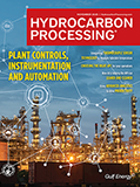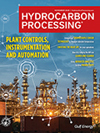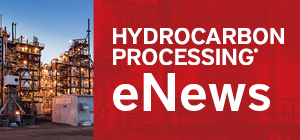Digital Exclusive: Optimize plant design in the hydrocarbon processing industry with advanced CAD tools
Author: T. SCHWARZWELLER, Microsol Resources, Farmington, New York
Hydrocarbon processing transforms crude oil and natural gas into valuable products such as petrochemicals and fuels. These transformations occur in hydrocarbon processing plants popularly known as refineries, which comprise different processing systems that must work together to ensure efficiency and safety.
These systems include electrical, air, cooling, compression and flaring, just to name a few. System components must be installed so they maximize efficiency without hindering production. This article will explore the evolution of computer-aided design (CAD) technology, its advantages and uses throughout the hydrocarbon processing industry (HPI).
The evolution of CAD technology in hydrocarbon plant design. In the early days of hydrocarbon processing, engineers relied on manual drafting techniques to design and install processing plants. However, this process was prone to errors and time-consuming. Unlike today, where modern technologies enable cost-effective design modifications, the changes were costly in the early 20th century.
Early CAD systems primarily supported 2D drafting, allowing designers to create, modify and replicate designs more efficiently than manual methods. Though the 2D designs were rudimentary compared to today’s technology, they laid the foundation for modern design systems.
Progression to 3D modeling. Modern CAD technologies owe their existence to the introduction of 3D models, which were first introduced in 1963 by Ivan Sutherland when he developed Sketchpad, an interactive computer graphics program.
This computer graphics program enabled engineers to visualize complex hydrocarbon plan layouts, resulting in increased accuracy, efficiency and better spatial understanding. Over time, the technology has evolved to include innovations such as:
- Simulation capabilities: The ability to predict the behavior of systems under various conditions
- Integration: Using CAD tools with other software, such as process simulators and management systems
- Automation: The ability to streamline repetitive tasks like equipment placement and piping layouts.
Key features enhancing modern CAD tools. Modern CAD tools have enhanced capabilities compared to those used in the last few decades. Due to features such as real-time rendering and clash detection, engineers and architects can now create realistic representations of hydrocarbon processing plants before they build them.
Real-time rendering provides interactive visuals of the hydrocarbon layout to aid in decision-making, while the clash detection feature helps identify potential conflicts in piping, structural components and equipment use.
Process simulation and engineering data. Another vital feature is integrating seamlessly with simulation tools and engineering databases. This enables dynamic simulations and unified data management.
Dynamic simulations enable engineers and architects to test how various equipment and systems perform under different conditions. Unified data management ensures consistency between design specifications and process parameters.
Modern CAD tools also enable designers to create separate, interlinked modules that can be fabricated offsite and assembled onsite.
Advantages of implementing CAD in hydrocarbon plant design. One of the main advantages of using CAD tools in hydrocarbon plant design is that they offer real-time validation and detailed modeling capabilities,1 which increase accuracy and reduce errors.
Another advantage is the ability to collaborate across multi-disciplinary teams. The design and construction of a hydrocarbon plant involve collaboration from various members and departments, ranging from mechanical to electrical and civil engineers.
CAD tools have features that enhance collaboration and communication, such as centralized data platforms and cloud-based integrations with other companies.
CAD software is also advantageous because it reduces construction and set-up costs by improving resource management. This is possible due to several features, such as the material optimization feature, which calculates the precise material needed to set up a plant.
CAD systems accelerate the design process by automating repetitive tasks. The process can also be accelerated by using pre-configured templates.
Merging CAD with data analytics for optimal design. To better harness the power of CAD, HPI professionals must integrate it with data analytics. This helps engineers and designers uncover patterns and trends that can be used for enhanced decision-making. Additionally, data analytics enable professionals to use historical data to accurately determine the amount and type of equipment used to set up a plant.
Similarly, predictive models help identify potential bottlenecks or failure points that can affect a project before it is built.
Modern CAD tools use data analytics and artificial intelligence (AI) to optimize various aspects of hydrocarbon plant design. This is possible using algorithms that analyze operational data to recommend the optimum layout that minimizes energy and costs.
Challenges affecting CAD implementation. One main challenge affecting the use of CAD technology is its high initial investment costs. CAD systems have high upfront purchase and training costs that can stretch planned budgets. In addition, CAD requires updates and maintenance over time.
This creates additional ongoing costs for the plant owner. Another challenge is that CAD is specialized software, meaning that engineers and designers must undergo a training program to use it correctly.
Similarly, employees often resist using newer technologies because they fear it will disrupt their accustomed way of doing things. In addition, they might think using CAD tools is too complex and requires special education.
To overcome this challenge, businesses must demonstrate the benefits of CAD to employees through demonstrations and pilot projects.
There is also a challenge in managing interoperability with already established systems. The lack of interoperability may result in data silos and workflow disruptions. It might also increase capital expenditure as the business must replace outdated software.
Future directions in CAD for the HPI. As technology evolves, so will the use of CAD in the design and construction of hydrocarbon processing plants. One example is using AI to create more innovative and efficient designs. AI can analyze vast amounts of data to optimize designs and predict potential issues before construction begins.
Other technologies that are being used alongside CAD are virtual and augmented reality (VR/AR). These technologies enhance the visualization of designs in a 3D space that offers an immersive experience for engineers and designers to understand how the plant will look before it is built.
CAD will also incorporate technologies like the Internet of Things (IoT) to enhance the safety of hydrocarbon plants. By integrating IoT sensors with CAD designs, real-time monitoring of equipment and systems becomes possible, allowing for predictive maintenance and early detection of potential issues. This approach helps prevent safety hazards and minimizes costly downtime.
Looking ahead, CAD will increasingly be used to create eco-friendly plant designs. By simulating energy flows and optimizing system layouts, CAD can help design more energy-efficient plants. These designs not only reduce operational costs but also minimize environmental impact, supporting sustainability efforts and compliance with green regulations.
CAD has the technical capability to modernize hydrocarbon processing plants to increase efficiency. In the design phase, CAD can be used to build cost-effective and eco-friendly plants thanks to its simulation capabilities.
NOTES
1 “What does CAD mean for the construction industry?” Microsol Industries, online: What does CAD Mean for the Construction Industry? - Microsol Resources
ABOUT THE AUTHOR
Tom Schwarzweller is an Account Executive for Microsol Resources for upper New York State and Michigan. Tom has a long background in selling and supporting CAD and building information modeling (BIM) software to the architectural, engineering and construction industries. He has worked with many of the early adopters of BIM and learned the benefits that BIM can create and has a deep understanding of what makes a BIM implementation successful. His many interests include sailing, photography and cycling.







Comments